Contact Details

Tungaloy has enhanced its uncoated cemented carbide insert line for non-ferrous applications by adding 13 new inserts with the -28 chipbreaker.
The demand for lightweight non-ferrous metals is rising in today’s industries. Aluminum alloys are the most common weight reduction materials in the automotive and aerospace industries, which are so machinable that uncoated carbide inserts can generally provide extremely long tool life. Likewise, copper alloys are widely used for seals, gaskets, and o-rings in plumbing applications.
Conventional machining methods of non-ferrous metal parts employ positive turning inserts with a high positive rake and sharp cutting edges. These inserts, however, can only be used on one side, thus generating higher cost per edge and part.
Tungaloy tackles the issue by expanding the economical, double-sided negative insert line with the -28 chipbreaker. Featuring a pressed-in chipbreaker geometry with a large inclination angle on the sharp cutting edge, the -28 generates free cutting action with superior chip control. In addition, a negative insert design provides the cutting edge with strength and reliability when machining parts with heavy cutting conditions at varying D.O.C.
The inserts are available in KS05F grade. An uncoated cemented carbide grade with submicron grain, KS05F provides the insert with wear resistance. This allows the new negative inserts to ensure long and predictable tool life over a wide range of non-ferrous applications.
The expansion includes standard ISO turning inserts in economical Class M tolerance, as well as ground-to-size inserts for precision finishing, encompassing finish to medium cutting of non-ferrous metal parts.
Related Glossary Terms
- alloys
alloys
Substances having metallic properties and being composed of two or more chemical elements of which at least one is a metal.
- aluminum alloys
aluminum alloys
Aluminum containing specified quantities of alloying elements added to obtain the necessary mechanical and physical properties. Aluminum alloys are divided into two categories: wrought compositions and casting compositions. Some compositions may contain up to 10 alloying elements, but only one or two are the main alloying elements, such as copper, manganese, silicon, magnesium, zinc or tin.
- chipbreaker
chipbreaker
Groove or other tool geometry that breaks chips into small fragments as they come off the workpiece. Designed to prevent chips from becoming so long that they are difficult to control, catch in turning parts and cause safety problems.
- copper alloys
copper alloys
Copper containing specified quantities of alloying elements added to obtain the necessary mechanical and physical properties. The most common copper alloys are divided into six groups, and each group contains one of the following major alloying elements: brasses—major alloying element is zinc; phosphor bronzes—major alloying element is tin; aluminum bronzes—major alloying element is aluminum; silicon bronzes—major alloying element is silicon; copper-nickels and nickel-silvers—major alloying element is nickel; and dilute-copper or high-copper alloys, which contain small amounts of various elements such as beryllium, cadmium, chromium or iron.
- inclination angle
inclination angle
Angle that the cutter edge makes with a plane that is perpendicular to the direction of tool travel. Determines the direction the chip curls.
- rake
rake
Angle of inclination between the face of the cutting tool and the workpiece. If the face of the tool lies in a plane through the axis of the workpiece, the tool is said to have a neutral, or zero, rake. If the inclination of the tool face makes the cutting edge more acute than when the rake angle is zero, the rake is positive. If the inclination of the tool face makes the cutting edge less acute or more blunt than when the rake angle is zero, the rake is negative.
- tolerance
tolerance
Minimum and maximum amount a workpiece dimension is allowed to vary from a set standard and still be acceptable.
- turning
turning
Workpiece is held in a chuck, mounted on a face plate or secured between centers and rotated while a cutting tool, normally a single-point tool, is fed into it along its periphery or across its end or face. Takes the form of straight turning (cutting along the periphery of the workpiece); taper turning (creating a taper); step turning (turning different-size diameters on the same work); chamfering (beveling an edge or shoulder); facing (cutting on an end); turning threads (usually external but can be internal); roughing (high-volume metal removal); and finishing (final light cuts). Performed on lathes, turning centers, chucking machines, automatic screw machines and similar machines.
- wear resistance
wear resistance
Ability of the tool to withstand stresses that cause it to wear during cutting; an attribute linked to alloy composition, base material, thermal conditions, type of tooling and operation and other variables.


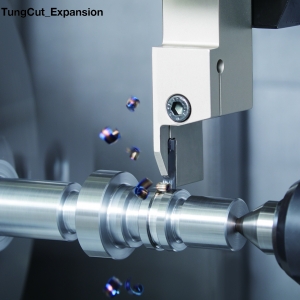
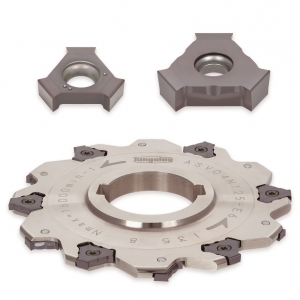

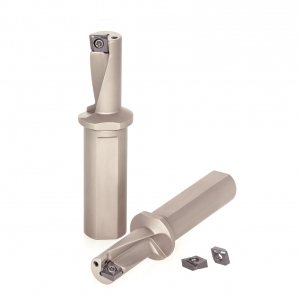
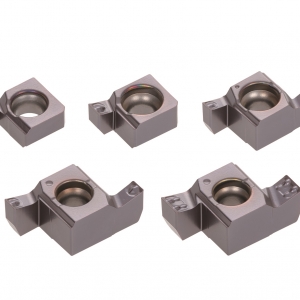
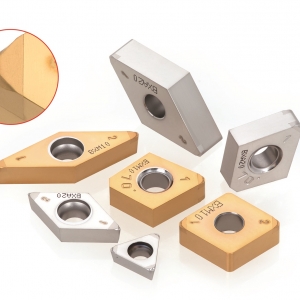
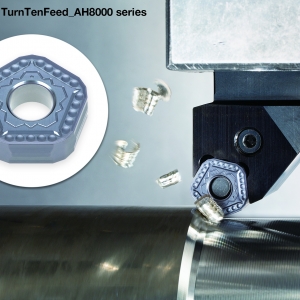
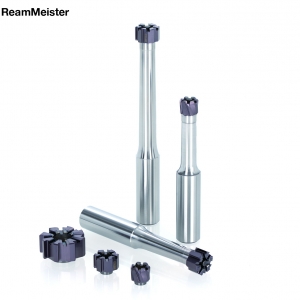
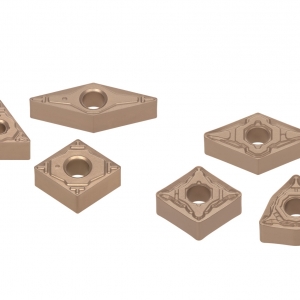
 PRODUCTS
PRODUCTS

